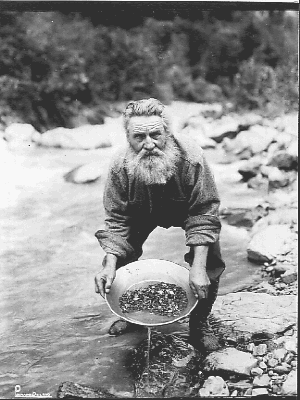An acronym gTLD stands for generic top-level domain. Top level domains are strings attached at the end of an internet address, the best know examples are .com, .org, .net etc. On June 20, 2011, the Internet Corporation for Assigned Names and Numbers (“ICANN”) announced that its Board of Directors had allowed an increase in the number of available generic top-level domains
. ICANN stated that the “internet address names will be able to end with almost any word in any language”, and that “virtually every organization with an online presence could be affected in some way.”
This potentially could resemble a web domain gold rush of the 90’s. In the last decade of the 20th century a number of people managed to register web addresses with highly sought after names. Subsequently, once the internet became mainstream medium many businesses weren’t able to register their first option name or found that their brand or trademark was already registered. These entrepreneurs were often referred to as cyberpirates or cybersquatters, among them was Rick Schwartz, now known as a domain king. A college dropout, who got an idea after 15 years working as a furniture salesman to start registering adult domains, such as slut.com, porno.com and ass.com. The business model behind it was very simple, it’s the same basic principle as a private parking space, but it’s termed as a parking page. The registered domains acted as a parking space for advertisements of the same subject as the name of the domain. However, this at best helped to cover the cost of an upkeep of the domain. The money was made by selling the actual address
of the domain.
The most expensive domain was sold in 2007, for $35 million, Brian Sharples bought VacationRentals.com only to stop Expedia from getting its hands on it first. During the same year, porn.com was sold for $9.5 million, while sex.com in 2010 proved to be worth more and sold for $13 million. Among other notable purchases was fb.com, which was purchased by facebook in 2010 for $8.5 million.There are numerous other purchases of domain names for millions, the list could go on like an accountant’s excel sheet.
One criticism of a domain business is that it’s a bubble, and that it’s about to burst. Forbes writer Deborah L. Jacobs, in an article After The Gold Rush: Domain Names Have Lost Their Glitter, noticed a trend, that there wasn’t a single large sum transaction for a domain name in the last three years. However, what she failed to mention in the article and probably didn’t find during the research, is that for the last three years the unrolling of gTLD’s has been in the process.
To register a gTLD it costs $185,000, therefore it prevents most people, including SMEs (small medium enterprises) from obtaining one. The large fee was designed to cater for large companies who want to secure their trademarks and for wealthy cybersquaters, because high cost still doesn’t prevent them. If one takes a closer look at who and which words are being registered, it quickly emerges that it’s predominantly boutique IP law firms of US origin. The gTLD names such as .porn, were quickly snapped up by Californian based companies, ICM Registry in this case. The same company also owns .xxx, however this gTLD was registered under different circumstances, surprisingly by an English man Stuart Lawley.
[embedyt]http://www.youtube.com/watch?v=ML1A5dFfQJk[/embedyt]
Apart from numerous IP boutiques, other usual suspects to register gTLDs were corporations such as Nike, HSBC and BMW. A number of cities registered their gTLD names, such as London, Berlin, Tokyo and New York.
In the video above, Stuart Lawley, discusses his registration of .xxx, but also provides an in depth view of a business model behind gTLD. The main difference between the old domain business model and a gTLD, is that previously to earn ROI (return on investment) one had to sell the domain name, but for a gTLD, one can accrue profit while administrating a secondary market register. This is where the SMEs can buy into their name of choice, if it’s a hotel, shop or an accountant’s practice.
The gTLD business model is more complex compared to the original park site and hope to sell for a large sum. The cost involved are a lot higher from the registration process, to the legal cost and administration. However, in the secondary market there is still an opportunity for an old style business. The issue might arise that involves the economic principle of supply and demand. Once there is so much choice available, there will be less of a need to purchase a single domain name for millions, but when somebody wants and needs a particular name, he has no other choice but to acquire it.
Since the early days of web domains, the importance to protect brand’s IP online has been high. Just like responsible parents monitor their children, or a jealous partner stalks their spouse’s digital interaction, organisations should be vigilant of their brand’s presence online, before it’s too late. For a strategy on how to protect and which aspects of brand IP to monitor is another story. To answer the questions if the gTLD registration is another gold rush, well, it is, but it’s no wild west, or for that matter a wild internet anymore, one requires capital to invest.

